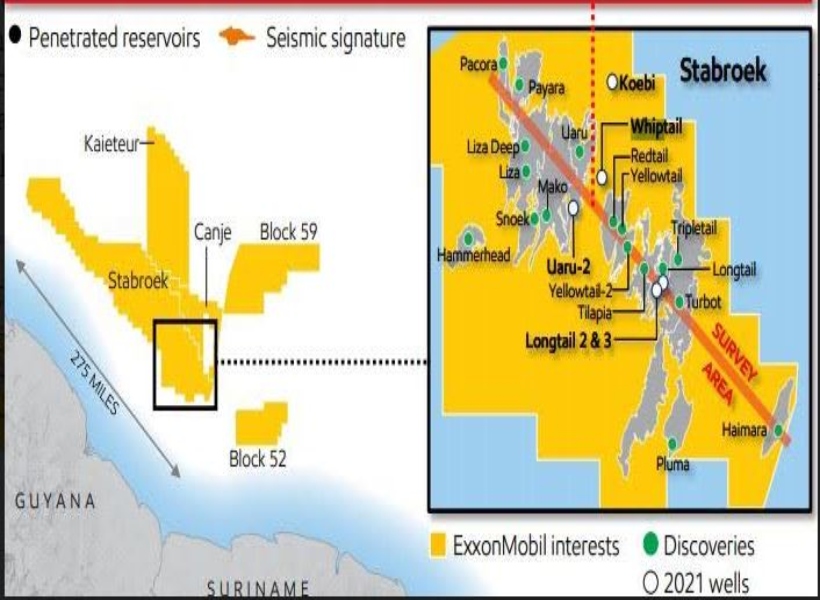Even though Guyana’s leading offshore explorer, ExxonMobil, was off to a disappointing start this year, as it misfired on the Canje block’s wildcat called Bulletwood-1, it is still poised for a rebound with an annual record of 16 wells says Norwegian Consultancy Group, Rystad Energy.
Rystad recalled that Bulletwood-1 encountered quality reservoirs but non-commercial hydrocarbons. The well was targeting more than 500 million barrels of mean prospective resources in a prospect similar to Liza in the neighboring Stabroek block.
Despite the non-commercial find, Rystad noted that Guyana still has more potential to be explored.
Santosh Kumar, an analyst with Rystad Energy’s upstream team, was keen to note that the company’s data suggests that close to 300 million barrels of oil equivalent have been discovered on average for each exploration well (wildcat and appraisal) drilled in the country over the past six years with around 16 exploration wells planned, including some in riskier frontier regions. “So 2021 holds a lot of promise,” expressed the analyst.
Further to this, Rystad said that the operator and its partners Hess Corporation and CNOOC/NEXEN plan to deploy four floating production, storage, and offloading units (FPSOs) to develop the existing resources within the block. However, the supermajor is expected to ramp up drilling activities, as it plans to have at least five FPSOs online by 2026.
Guyana Standard understands that success at this year’s Mako-2 and Uaru-2 wells on the Stabroek block could potentially firm up the Mako/Uaru area as a candidate for the next FPSO location.
On the Canje block, Rystad said that plans are in place to drill two wells in 2021 in addition to the uncommercial Bulletwood-1 find, with the Jabillo well already in progress. No further exploration plans are expected for the Kaieteur block.
As for Canada-based explorer CGX Energy which operates the Demerara and Corentyne blocks with 66.67% interests, with Frontera Energy as its consortium partner, Rystad said that the plan for 2021 consists of up to two exploration wells, at a combined estimated cost of about US$90 million.
This news agency understands that there are no drilling plans reported for this year as yet on the Repsol-operated Kanuku block and Tullow Oil’s Orinduik block. However, 3D seismic reprocessing is scheduled to mature prospects for future drilling.
Meanwhile, in eastern Guyanese waters, Rystad said there are only two unallocated blocks: Block C, which lies east of the Kaieteur block and north of Stabroek, and a smaller 1,325 square kilometers block, which was relinquished by the Canje consortium.
The other unallocated offshore deepwater region lies northwest of Guyana’s offshore sector. Rystad said this area, formerly called the Roraima block, is bordered by the Kaieteur and Stabroek blocks. It is, however, part of a territorial dispute between Guyana and Venezuela, therefore potentially struggling to generate interest.













